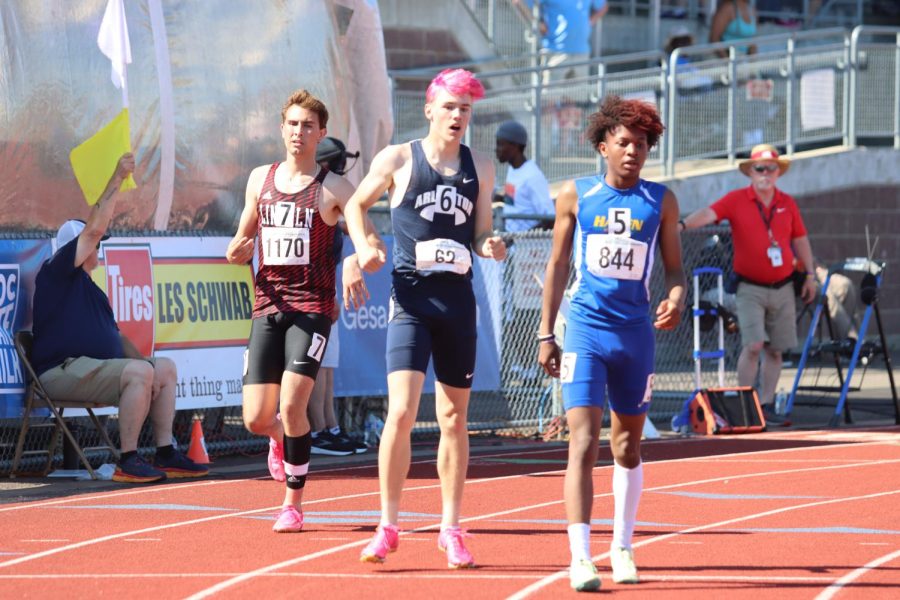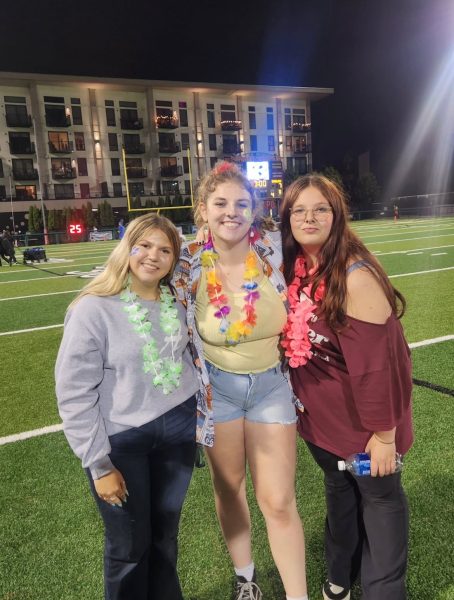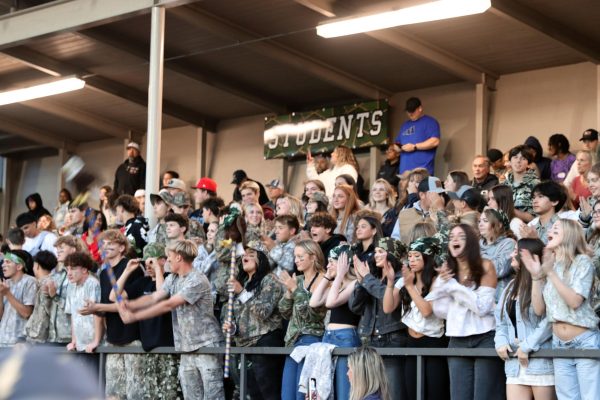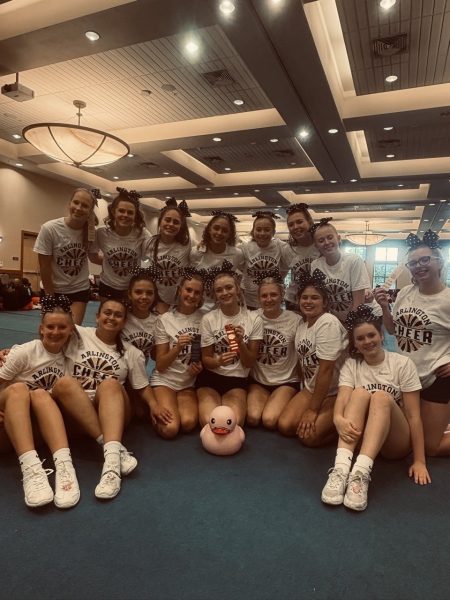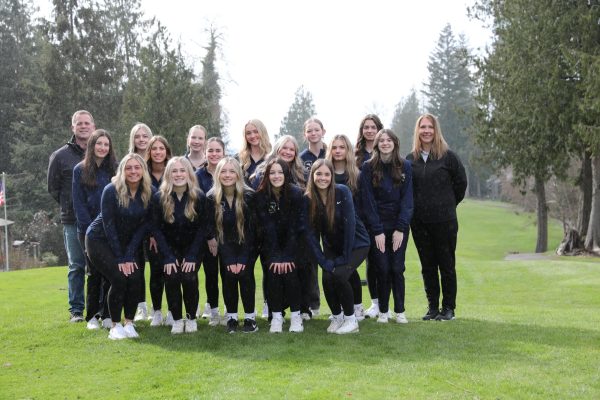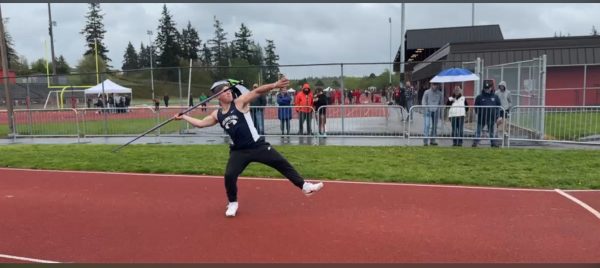Eagles Compete at State
Junior Dallas Miller competed in the 400m dash. Also pictured are Lincoln sophomore Julian Starns and Hazen freshman Kenyon Andrews.
Arlington High School sent 22 athletes, 16 boys and 6 girls, to the WIAA State Championship Meet from May 25 to May 27. Arlington placed 48th in the Women’s 3A division and 12th in the Men’s 3A division.
Senior Kellen Langford became a state champion and school record holder in the 800m dash with a time of 1:51.67. At the district championship meet, Langford fell just seven-hundredths of a second short of Aiden Emerson’s previous record of 1:52.67, but at state, he was able to break the record.
“I planned on winning that title for a year,” said Langford. “It feels good to have my hard work pay off.”
Arlington’s 4×400 team, composed of juniors Dallas Miller and James Scott, senior Ryan Ruhston, and Langford, placed fourth in the meet with a time of 3:22.02. At districts, the team ran a school-record time of 3:19:99, and they followed that race up with a podium finish at state.
Speaking on the success of the relay team this season, Miller said “it was incredible and unexpected.”
Mary Feider, a senior jumper, placed eighth in the high jump with a jump of 5’0. She has now placed in the event in back-to-back years. Last season she placed second with a PR of 5’5.
“The atmosphere of the meet was extremely competitive,” said Feider. “To me, the opportunity to compete at state meant the endgame of my athletics career with the teammates I loved the most.”
For fifteen of Arlington’s athletes, this year was their first experience at state. They had to adjust to the most competitive meet of their careers, as well as to the long grind of a three-day meet. “It was fun, and almost overwhelming at times,” said Miller.
State, and track and field as a whole, isn’t just about times and places. Arlington teammates were able to bond with each other on the trip during the meet and other fun experiences.
“Going to state with my teammates brought us closer together,” said Feider. “We all had to support each other and state put us in a position to do so.”



